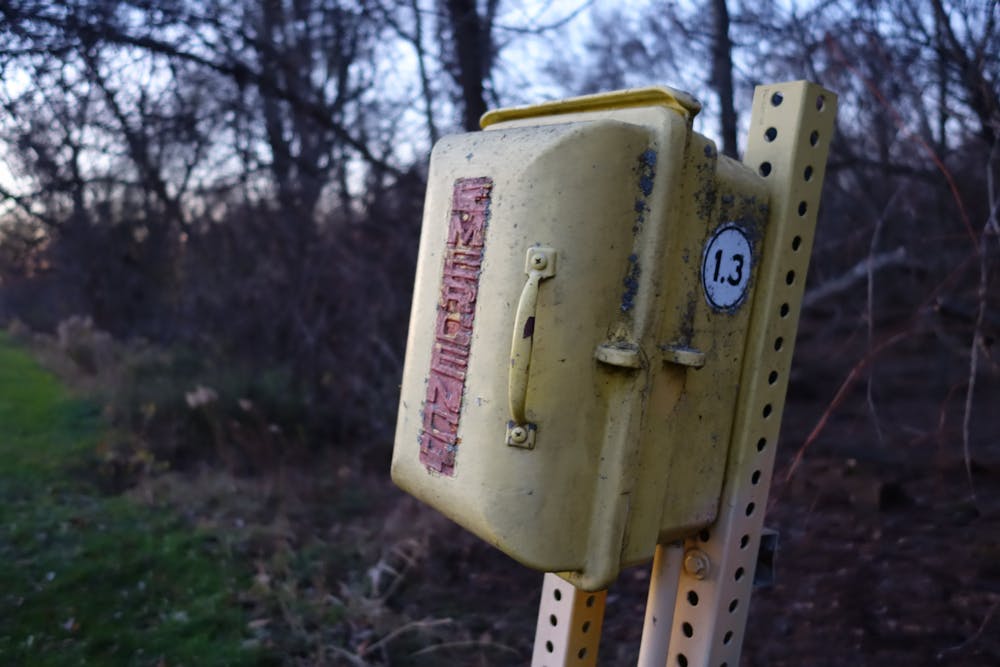On a late September afternoon in 1990, Linda Yalem left her Richmond Quadrangle dorm room to go for a run on the Ellicott Creek Trail behind UB’s North Campus.
Yalem, a sophomore communications major from California, was training for the New York City Marathon. She told a roommate she would finish her 15-mile run by 3 p.m.
Yalem never returned.
Two days later, police found her body in a wooded area next to the path. She had been brutally strangled, beaten and murdered.
She was one of three women killed, and one of 15 raped, by Altemio Sanchez, a Cheektowaga man known only as the Bike Path Rapist until his 2007 arrest. Sanchez attacked joggers on bike paths and in parks throughout Buffalo and its suburbs. He died in an apparent suicide this September.
After Yalem’s murder, authorities increased security along the path by installing yellow emergency telephone boxes along the path, a mile apart.
But those phones may not be in service much longer.
The phones are currently in service and maintained by the Town of Amherst, but Verizon Communications, which provides service to the phones, plans to stop supporting the copper lines that connect them.
When that happens, the town will have to replace the phones with a new system or do without them. The Ellicott Creek Trail is the only Town of Amherst park with emergency phones, but Amherst Police Technical Services Officer Richard Phillips says the ubiquity of cell phones means they haven’t seen much use.
“We could replace it, we could add it into our radio network, we could use cellular communications,” Phillips said in a telephone interview. “There are more phones on the bike path than there ever have been in history, because every person has a cell phone.”
“It’s still definitely something that we’re aiming to replace, and we’re not planning on abandoning it,” he said. “It’s just a question of what it might look like in the end.”
For some trail users, cell phones are enough. Roberto Gonzalez, a psychology major who was walking with a friend Sunday evening, said he has never used an emergency phone. He hopes the town will install a system similar to UB’s blue light call boxes, but he said he would reach for his cell phone in an emergency.
Kevin Hyland, a Canisius University graduate who jogs the path nearly every day, hopes the town will continue to provide emergency phones. Though he carries a cell phone and feels safe walking the path, he said there’s still a need for the service.
“There should be some way of getting assistance if something were to happen,” Hyland said. “Just because one crappy dude is gone, that doesn’t mean there aren’t other ones out there.”
UB separately maintains the “blue light” call boxes on its North and South Campuses. Those boxes, which are tested monthly, are also served by Verizon. They will not be affected when Verizon cuts the yellow phones.
When they were tested in early October, a box located at Jarvis Lot had no dial tone for the second month in a row, and one in front of the South Lake Village Community Building had a quiet emergency loudspeaker. A box near Crofts Hall, which had no dial tone in September, had been repaired by the time of the October test. At the beginning of November, two of the boxes were out of service due to construction, UPD Deputy Chief of Police for Administration Joshua Sticht said.
UPD bike patrol officers share coverage of the entire Ellicott Creek Trail with Amherst police, and Sticht said the majority of calls are for first aid.
A spokesperson for Verizon did not comment in time for publication.
Sol Hauser is a news editor and can be reached at sol.hauser@ubspectrum.com





